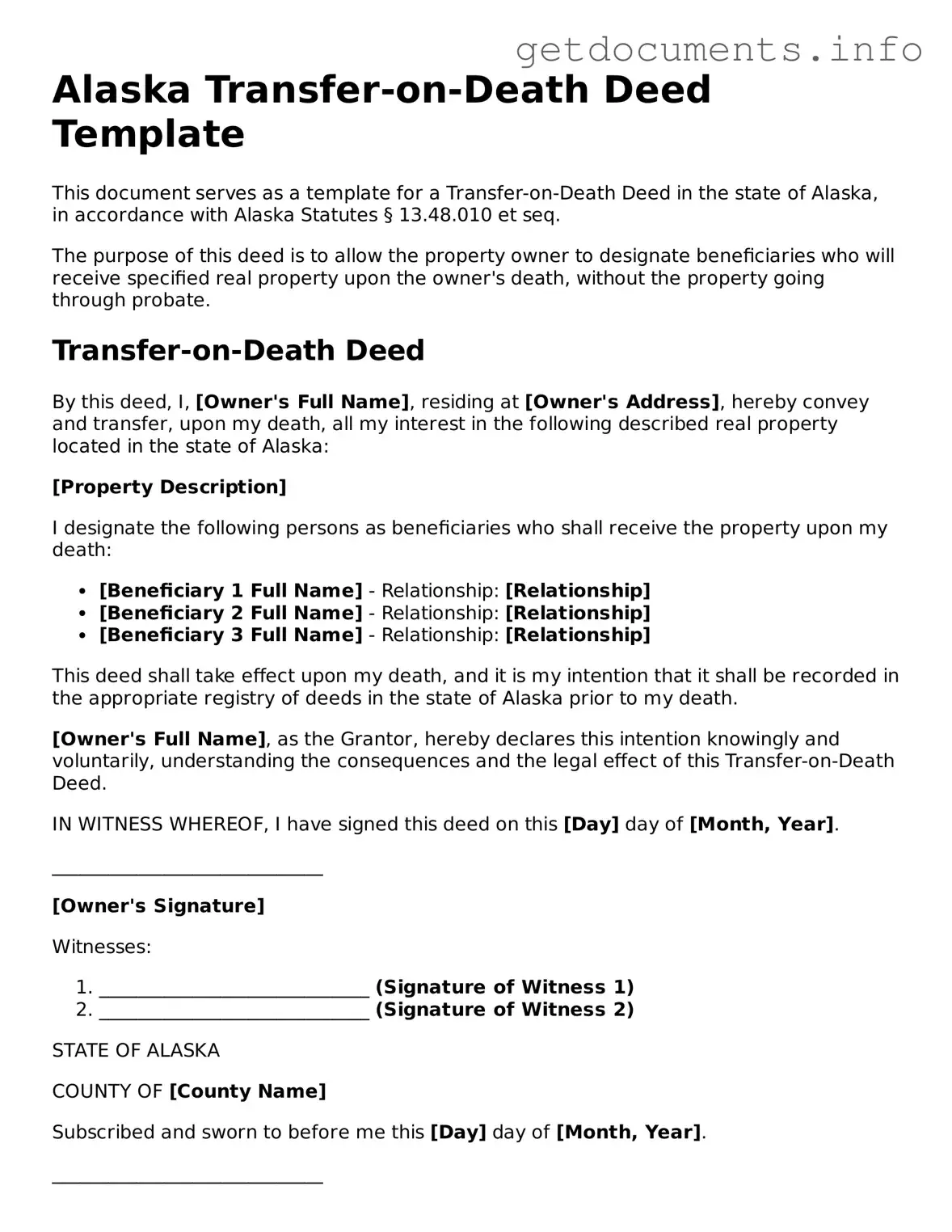In the beautiful and vast state of Alaska, property ownership comes with its own set of challenges and opportunities, especially when it comes to transferring assets after one's passing. One important tool that Alaskans can utilize is the Transfer-on-Death Deed form. This form allows property owners to designate a beneficiary who will automatically receive their property upon their death, bypassing the often lengthy and costly probate process. By using this deed, individuals can maintain control over their property during their lifetime while ensuring a smooth transition of ownership to their chosen heirs. It’s not just about the transfer; it’s also about peace of mind, knowing that your wishes will be honored without unnecessary legal complications. Understanding the ins and outs of the Transfer-on-Death Deed is crucial for anyone looking to secure their legacy and simplify the process for their loved ones. Whether you’re a seasoned property owner or new to real estate, grasping the nuances of this deed can make a significant difference in estate planning.
